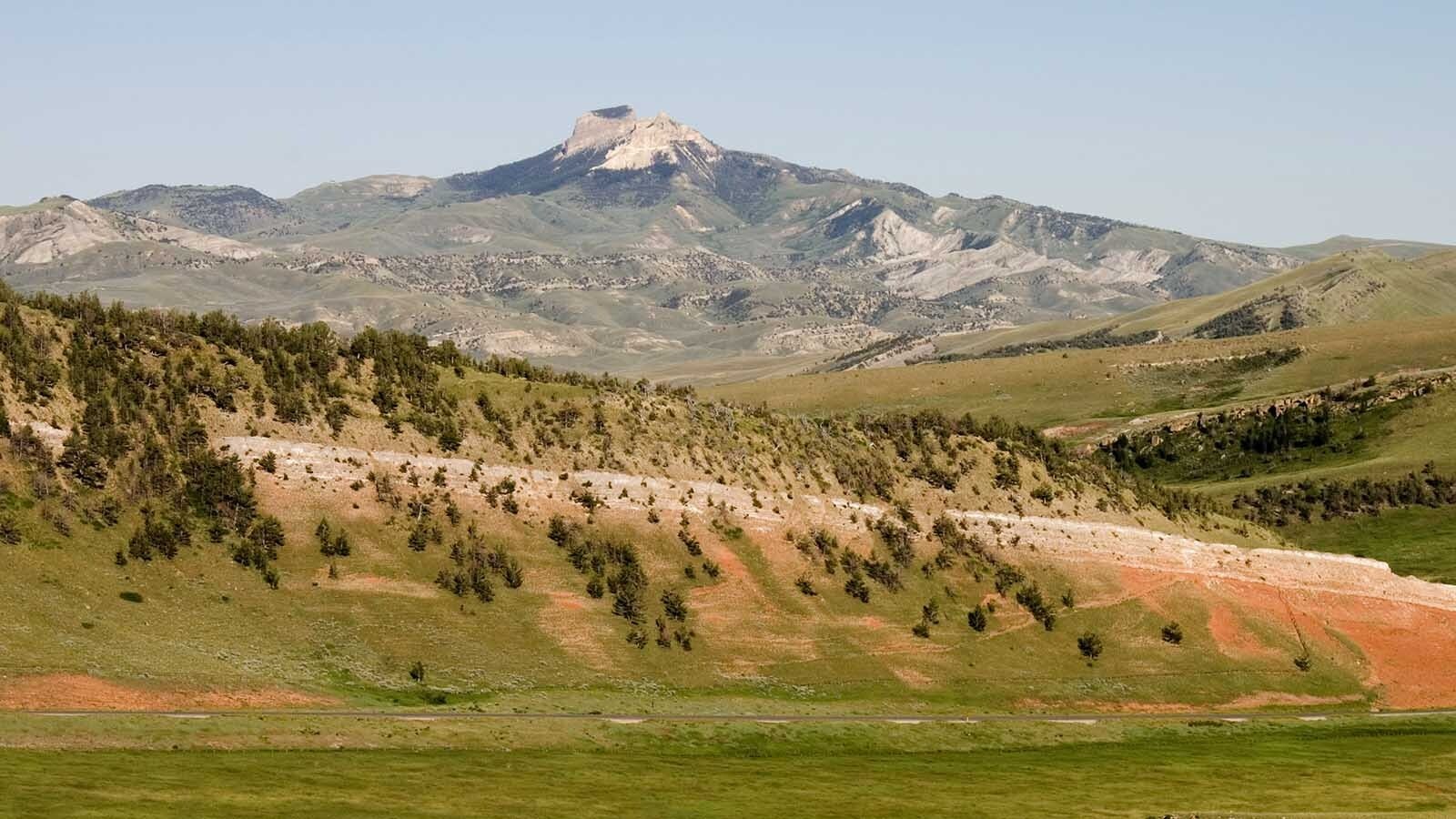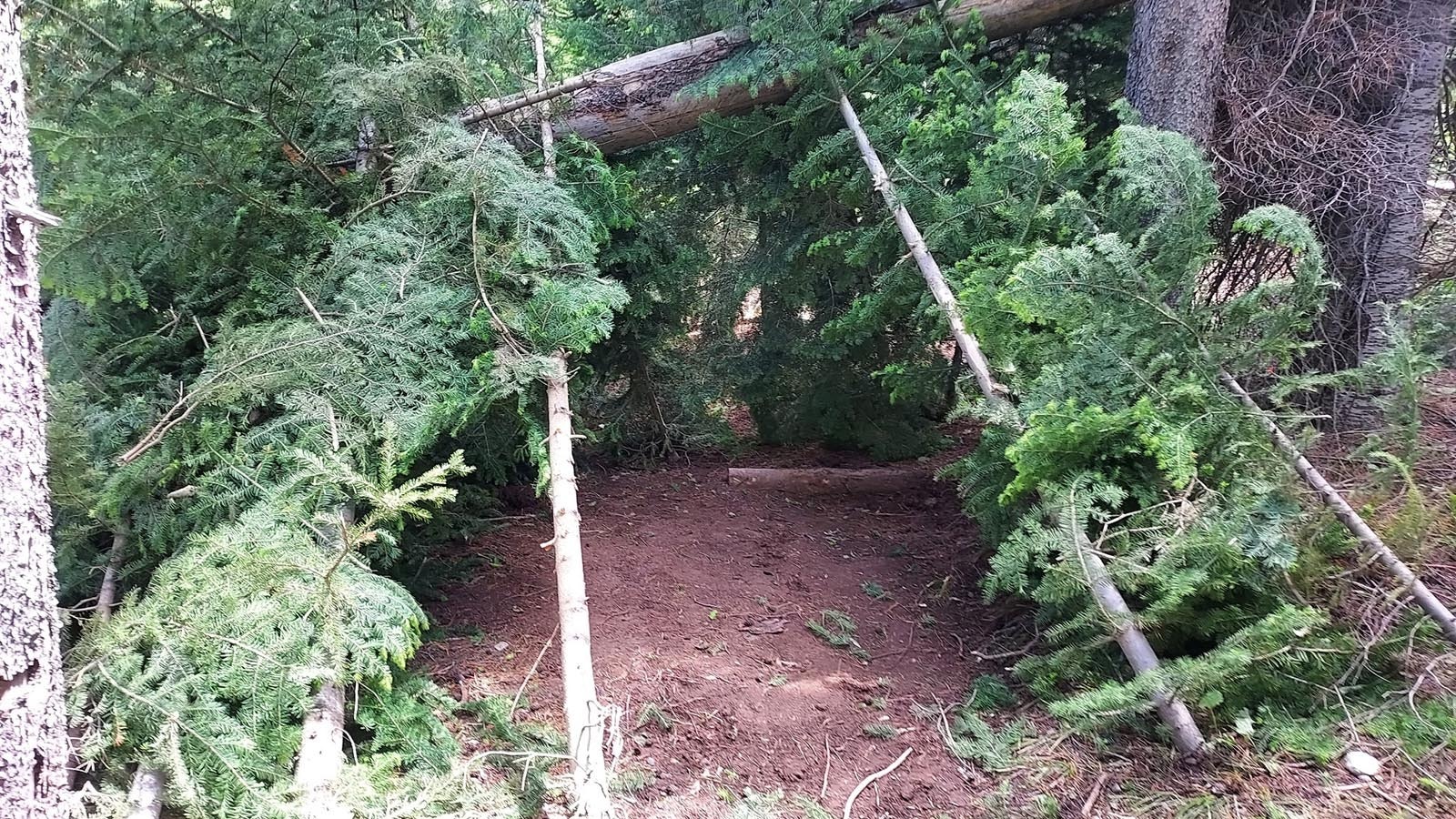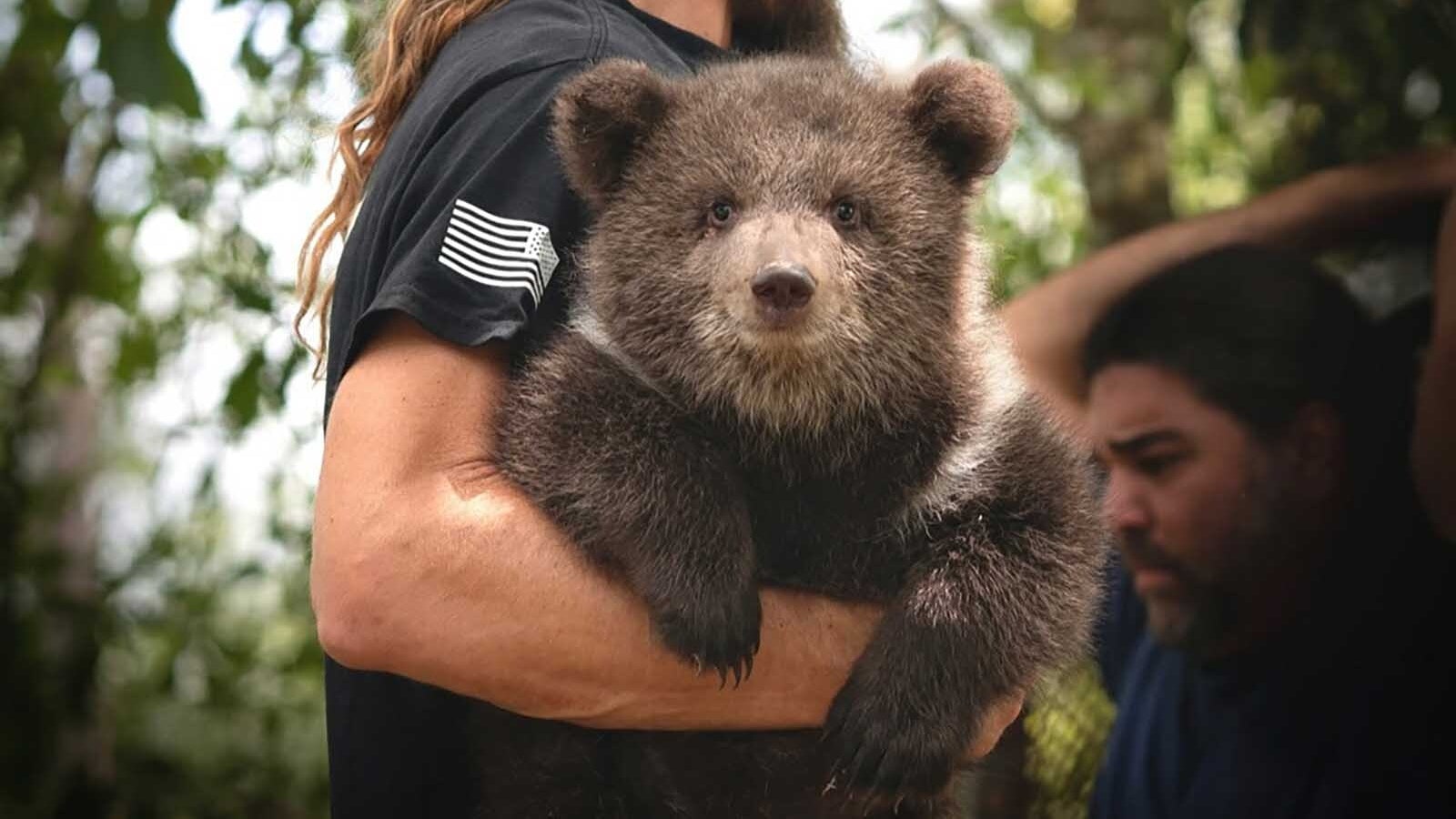GILLETTE — With a pair of large wildfires mostly contained at this point in Campbell County, discussions have now turned to what happens next in the aftermath of the destruction and how future emergencies might be handled better.
Emergency responders and locals are frazzled after the worst week for wildfires in the county’s history have blazed for the past week.
Speaking before a packed auditorium at Cam-plex on Tuesday night, Campbell County Fire Chief Jeff Bender addressed the community alongside members of the Southwest Area Incident Management Team 5.
The 94 members of the team arrived in Gillette on Saturday to take over operations of the four fires throughout Campbell, Sheridan and Johnson counties that collectively have burned nearly 450,000 acres.
Bender and the Campbell County Fire Department have been the targets of frustrated land owners and others in the community who feel they were left to fend for themselves in the face of raging flames while others criticized a lack of communication.
Many more praised the firefighters who stood or sat together in solidarity in the packed room.
With the fires more than half contained by the incident management team at this point, Bender turned his focus on a handful of “constructive comments” from locals that he and the department will integrate moving forward.
This was the most extensive fire effort in Campbell County history with several lessons learned, he said.
First, Save Lives
First, he wanted to acknowledge that the department’s No. 1 priority was saving lives, followed by primary structures, grazing lands and gas and oil infrastructure.
With the exception of one person who may have sought medical attention as a result of the fires, Bender said the department “hit those two top priorities” with the help of the energy companies, ranch fire engines, landowners and the county road and bridge department, and private assets, including the loan of at least 46 pieces of heavy equipment that greatly aided their efforts.
He said the engagement of the community was an integral part of the efforts and they were appreciative for the help.
That said, there were lessons to be learned, Bender noted, particularly with regard to the use of private equipment in firefighting efforts and eliminating communication issues and bottlenecks.
“So, one good suggestion, one conversation, is can we create a repository so those folks could call in if there are landowners beyond the current and active incident command that perceive needs of their own moving forward to possibly tap into that,” he said.
The other primary complaint is improving communication moving forward. Bender explained that they don’t have a primary public information officer and that the role is just another hat firefighters wear along with their regular duties.
When these fires erupted, communications people were out on scene fighting fires and weren’t able to quickly relay updates and other information to the public and media.
“So those are things we’re really taking input and will provide better options moving forward,” he said.
They will also look at options for providing wildland fire training opportunities for the public also as well as do a better job educating the public on pre-evacuation and evacuation orders.

Misinformation
Local resident and owner of TenderCare LLC, an in-home and respite service, was happy to hear efforts are underway to improve communication in emergency situations.
She and her husband John’s land is sandwiched between the Flat Rock and Constitution fires and had received a pre-evacuation notice. But they weren’t quite sure what that meant and whether they were in imminent danger.
They’re also in an area of limited internet access with no access to radio stations and were trying to make sense of the urgency of the situation on Facebook, which as Boler learned, was not accurate information.
She had been concerned about one of her elderly patients who she read online was in an evacuation area, which turned out not to be true. But without knowing for sure, Boller was desperate to find out in case her patient’s life was in peril.
As she noted, in the immediate aftermath of the fires starting, the fire department had only one post asking the public to stop dropping off donations because they were out of space.
She called both the fire department and Campbell County Emergency Management, who told her they were also waiting for information from fire. Then she said she hounded a few of the county commissioners, who asked one of the fire chiefs to call Boller directly, who confirmed the area in question was not under evacuation orders.
“We’ve got to have better communication,” she said.
She suggested to Gov. Mark Gordon, who attended the meeting, that the state should consider incorporating a statewide emergency radio station in case of future emergencies which he seemed to think was a good idea, she said.
Apart from the lack of clear communication, she applauded the firefighters and the community for their efforts tackling the emergency. She said that this was echoed by one of the incident commanders who told her that he’d been at fires all over the United States and that this community was one of the best he’s ever seen in terms of all the volunteers who stepped up to help.
State Rep. John Bear, R-Gillette, who also attended the Tuesday meeting with his wife Sage, agreed that a lack of information in the initial stages of the fires was a problem.
“There were some hiccups, but we don’t have these large fires very often,” he said. “I think authorities learned a lot, especially about communication with the public.”
Whac-A-Mole
Along with terrain, lightning-induced fires forced local firefighters into playing a vicious game of Whac-A-Mole.
Wyoming State Forester Kelly Norris detailed how storms exacerbated the fire conditions in Campbell and surrounding counties between Aug. 20 -21.
There were 41 lightning strikes in Sheridan County, 147 in Johnson County, 136 in Campbell County and more than 1,000 in neighboring Weston County, Norris said. These storms were coupled with high winds, igniting at least 34 wildfires across eastern Wyoming.
Campbell County Fire Department Deputy Chief J.R. Fox read the crowd a long list of incidents that the department responded to the first day of the fires, including a gas leak, a traffic accident and more than a dozen reports of grass fires within minutes of one another.
During this time, they received calls from neighboring Johnson and Converse counties for fire help, both of which they had to deny because of their own workload.
Finally on Thursday, they decided to turn control of the fires to the national incident management team because of geography and a lack of supervision over all the fires, Fox said.
“Our organization was tapped out. Our adjoining families were tapped out. The BLM and [U.S.] Forest Service was tapped out,” he said.
Turning the fire over to national command also meant that the department would have more access to aerial assets as well as hotshot crews, logistical planning, communication and all the other support that goes with fighting large fires, he said.
“But most importantly, we need the long-term lead to release local resources, so we can continue our initial impact responsibilities in the county,” he said.

Too Political
For some like Campbell County resident Fred Oedekoven, the multiple layers and overlapping agencies have made firefighting over complicated and political.
The 79-year-old rancher has spent his life fighting fires on his and his neighbors’ ranches near Recluse in northern Campbell County.
His former neighbor and rancher, Dave Hutt, agreed.
Both yearn for the days in the past when ranchers could just put out their own fires, if needed, without limited agency involvement.
The two weren’t impacted by these recent fires, but recalled one two decades ago where a pocket of timber had caught fire on Oedekoven’s property.
He said they had it circled when the BLM came in and told them they were taking over. He said they called off the Campbell County fire department and told Oedekoven it was in an area that they wanted to let burn.
Oedekoven, however, could see the winds were picking up with 60 mph or higher gusts expected that afternoon. He offered to bring in his ranch hands and equipment to put it out, but was told by authorities to let it burn.
When the wind came up, he lost 6,500 acres to the fire along with his fence that cost him $20,000 to replace.
“These are the things that frustrate you,” he said.
Jen Kocher can be reached at jen@cowboystatedaily.com.





